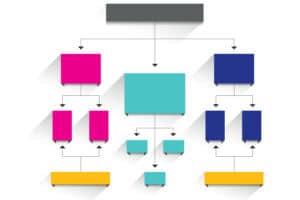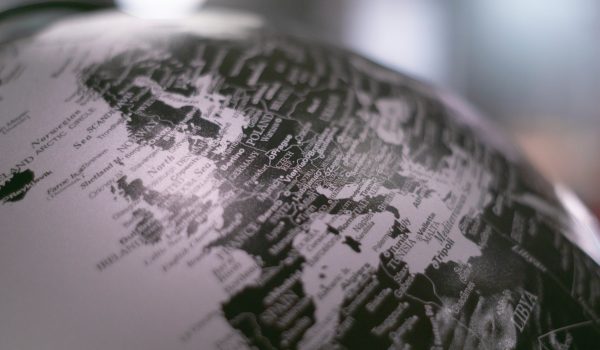Cornell Method, Mind Maps, Flow Chart and Boxing Methods and more - best apps, templates, and note-taking methods to boost your effectiveness.
Notes are meant to be learned from, not abandoned the moment the class is over. And considering all the subjects out there, the one-size-fits-all approach doesn’t work when it comes to summarizing what a professor is saying. Read on to find ways to take neat notes so that the information is both legible and organized.
Top four techniques
The methods below are as simple as note-taking can get. You can either use old school pen and paper or use the apps listed below to store your notes online.
Cornell Note-taking Method

This system was first designed in the 1940s by Walker Pauk, an education professor at Cornell University and later described in detail is his book How to Study in College. This method allows students to organize their notes in a few simple steps without having to adjust to a novel format. Before we dive into summarizing what the professor had to say, we need to prepare an outline for the notes. For that, draw two lines. First, one should create two columns, the right one being twice the size of the left one. Then leave two inches at the bottom of the page and draw a horizontal line across the page.
And now, here are the actual steps:
- Record. In the right column, record the lecture using short sentences.
- Questions. As you go, formulate questions based on your notes and write them down in the left-hand column. Alternatively, you can write down cue-words or main terms instead of questions.
- Recite. Cover the right column and try to recall the lecture using the questions.
- Reflect. Try to connect the lecture and the main points to what you already know from previous lectures.
- Review. Go over the notes and create a short summary at the bottom of the page. This could be in the form of a paragraph or an outline.
If you’d like to watch a video on the Cornell method, here are a couple. And if you are more of a visual learner, the next method is for you.
Mind Maps

The term itself was popularized by the British popular psychology author Tony Buzan in the mid-1970s. Although using branching and radial maps goes back to Roman philosophers, it is still a very effective method for structuring information. It is widely used to as a visual aid method to retrieve and group information.
First, you write down an idea in the centre of the page and then draw lines, kind of like tree branches, that lead to subtopics within the main theme. This allows your ideas to be separated, yet the logic can easily be traced.
If you don’t want to restrict your ideas to just one sheet of paper, here are digital canvases for your mind maps:
- Coggle (Web) for beginners
- Mindly (macOS, iOS, Android) for mind mapping on your phone
- MindMeister (Web, iOS, Android, macOS, Windows) for working on a mind map with a team
If your information looks more like a step-by-step process with a strict order, then the flow chart method will suit you better.
The Flow Chart Method

The flow process chart was first introduced by Frank and Lillian Gilbreth for members of the American Society of Mechanical Engineers in 1921. Later it was used as a tool for describing computer algorithms.
It’s a simple technique that is used to outline each step in a series of activities and/or their alternative routes within a process. The flow chart method works well for experimental procedures in science classes rather than in the more abstract humanities.
There are only two steps to this method:
- Draw a box and write down an event/task/activity in it.
- Draw a line to the new box and repeat Step 1.
Here is an article on how you can upgrade your flow chart by using different arrows and symbols. And in case you have ideas that are not connected, there is a note-taking technique for that!
The Boxing Method

Although this method doesn’t have an author per se, many of us may have used it intuitively. As the name indicates, notes are written in multiple boxes based on themes. This technique is best used for exam preparation. You can create an ultimate cheat sheet for revision with all the topics summarized on one piece of paper. A useful desktop app for this method is OneNote by Microsoft. It allows you to create documents with unlimited space to write in all directions.
All these methods are best used in combination so that you get as much value out of your lectures as possible. To ensure that you do things right the first time, here are some more tips.
Use Acronyms
Why write words in full if abbreviations work just fine? Although for names and terms it is crucial to get them right, functional words like “without” and “consequently can be abbreviated. Here are a few examples:
- (etcetera) = and the rest
- g. = for example
- info = information
- e. = that is
- b. = note well, important
- p = page (pp = pages)
- para = paragraph
- = chapter
- = number
- diff = different
- without = w/o
To take it even further, here are a few symbols to substitute for words:
- ∴ = therefore, thus, so
- ∵ = because
- + = and, more, plus
- à= gives, causes, leads to
If you’d like to master the art of acronyms, check out this article for more examples.
Print Out Some Templates!
If you’d like to create some more structure in your notes, download free templates for each of the methods:
Manage your time with these four techniques

- Create an agenda
A simple list of topics with deadlines goes a long way as long as there is consistency in completing tasks. Assign a time-slot to each topic using this printable and make sure to reward yourself afterwards!
- Set a goal for each study session
You can only understand if the time spent revising was productive if you set a clear goal. Pick a topic and finish the sentence “By the end of this session I will learn…”. More on study goal setting here.
- Get in the flow….
Remember when you were so engaged that the time passed by quickly? That happens when you enter the flow state. Starting tasks can be the main challenge as it requires the most “activation energy” to get down to work. But once you’re working, you actually need less energy than at the start. If you pick tasks that are similar in nature, your brain doesn’t need to change focus. And that means that you can work longer.
- …Or work in shorter bursts
For tasks that you want to complete fast, a Pomodoro tracker or a simple timer will work perfectly. Just set a timer for 15-25 minutes and fully devote yourself to solving the one task in front of you. This way you eliminate the fear of running over time as the loud timer will indicate the end of the session.
Changing note-taking habits requires some discipline and time. But applying these life hacks will improve your focus and save you time up front. Not only will you be able to complete your notes faster, you won’t need to rewrite them before exams. It’s a win-win!
Photos: Shutterstock
Support us!
All your donations will be used to pay the magazine’s journalists and to support the ongoing costs of maintaining the site.
Share this post
Interested in co-operating with us?
We are open to co-operation from writers and businesses alike. You can reach us on our email at cooperations@youthtimemag.com/magazine@youthtimemag.com and we will get back to you as quick as we can.










